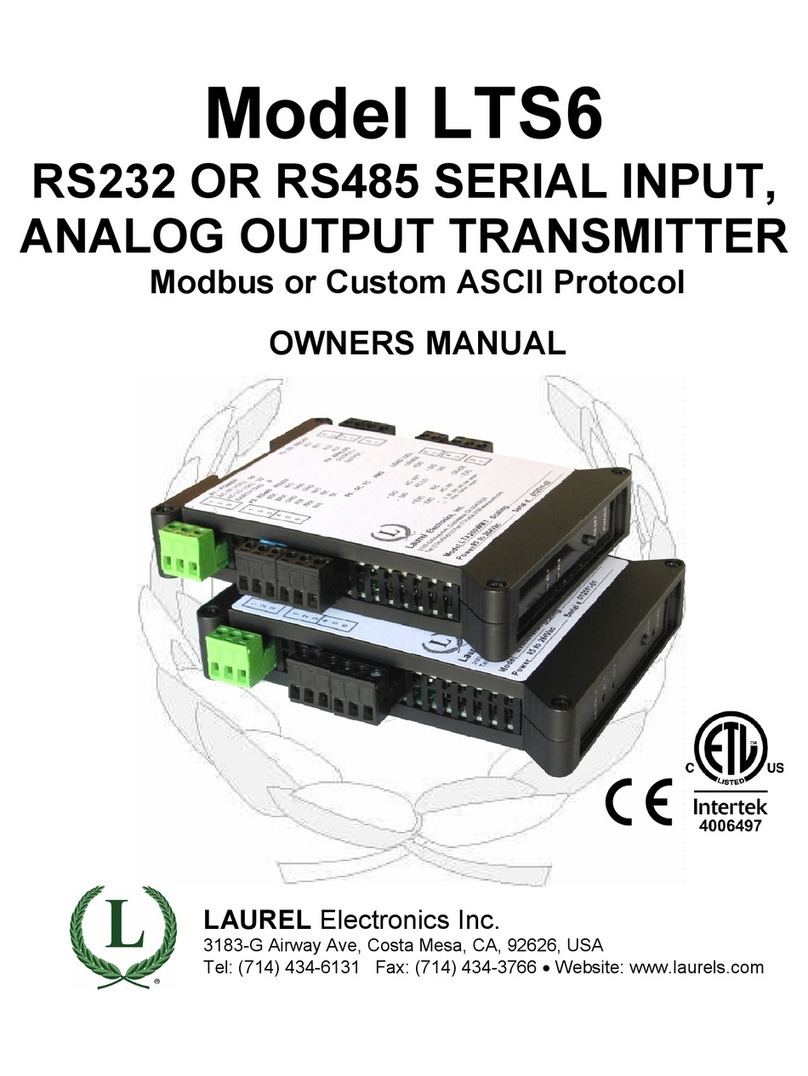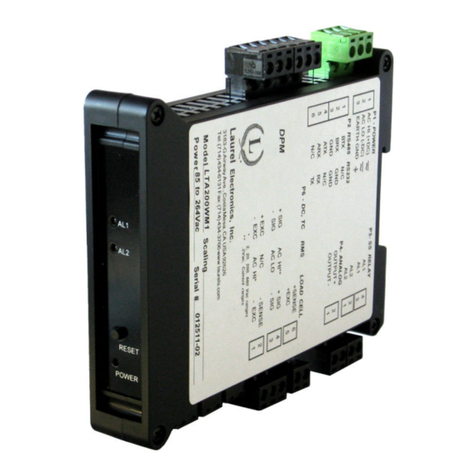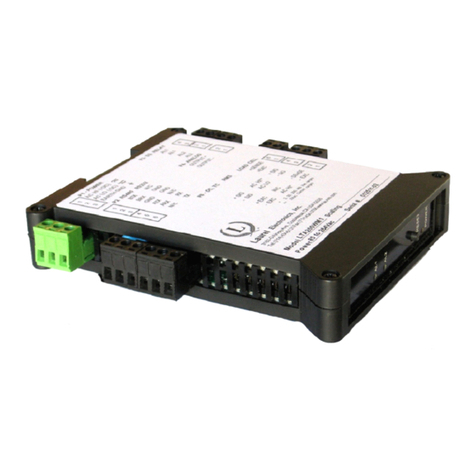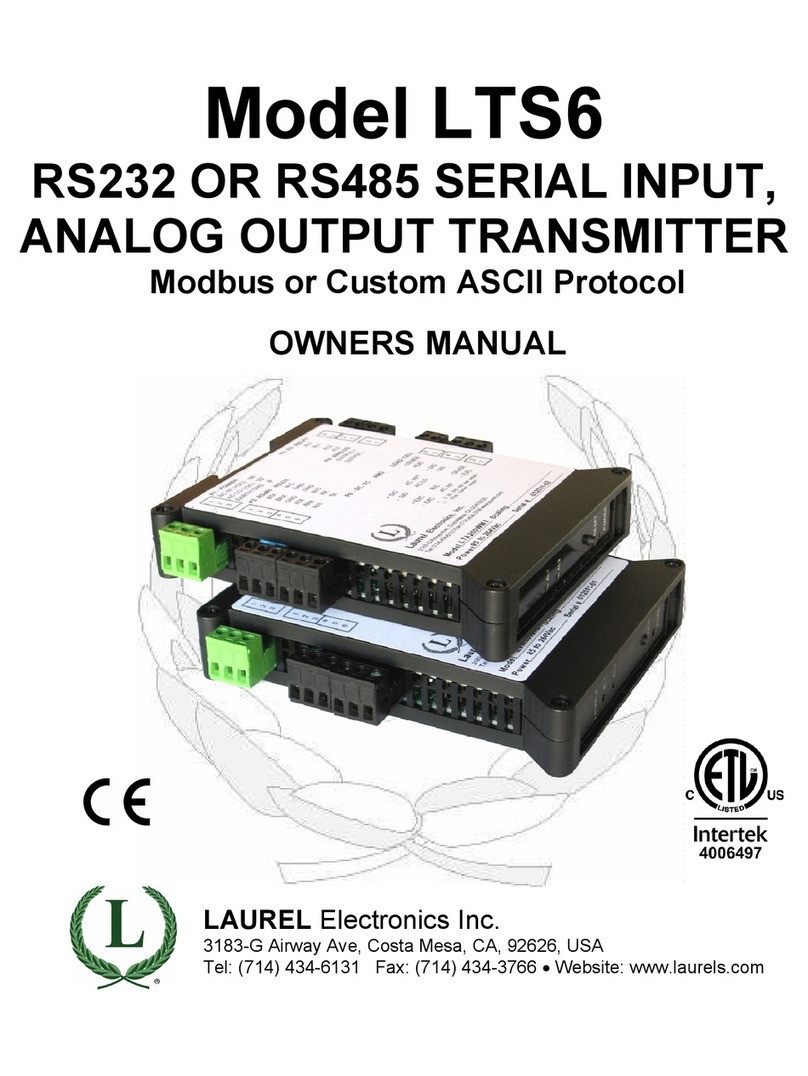
8. SETTING UP OUR LTSE TRANSMITTER WITH IS SOFTWARE
OVERVIEW
The analog output and relay output functions of an LTSE transmitter are set up initially with
Laurel’s free Instrument Setup (IS) software, a Windows-based application that runs on a PC.
For setup, the LTSE can be connected to the PC via a direct Ethernet connection, or the LTSE
can be plugged into the same LAN as the PC. The IS software running on the PC will discover
the LTSE’s Ethernet Node (or Ethernet chip) and the host Device (or the LTSE transmitter
proper) that houses the Node.
To set up the analog output, jumpers on the LTSE main board are used to select current output
(4-20 mA or 0-20 mA) or voltage output (0-10 ). Current output is the factory default. To scale
the analog output, the values for the high and low endpoints of the range are entered using IS
software. A variable called “Item 3” is entered via a Modbus command and is compared to the
two endpoints to generate the analog output by linear interpolation.
To set up relay operation, relay setpoints and relay operation modes are programmed into the
LTSE using IS software. For relay operation, the same “Item 3” variable that is used for the
analog output is compared to the setpoints. The relays can also be actuated directly via Modbus
commands, as explained in this manual.
Following initial setup, the endpoints used to generate the analog output and the parameters
used to control relay operation can be changed on the fly using Modbus commands shown in
our Modbus Manual for Counters at https://www.laurels.com/downloadfiles/Modbus-Manual-
CTR.pdf.
INSTALLING INSTRUMENT SETUP (IS) SOFTWARE
Under Windows 7 or 10, set User Account Control (UAC) to “Never Notify” so that IS software
can write files. Use Google for instruction on how to change UAC for your version of Windows.
Turn off and restart your computer. Download IS3_5_4.exe onto your PC from our website.
Double-click on the downloaded file to unzip it into a directory, like C:\temp. Within that
directory, double-click on setup.exe to install the software on your PC. IS software works with
all versions of Windows. If you cannot complete the installation, this may be because of
software firewalls at your company. Please see the troubleshooting section at the back of this
manual. Your executable file will be C:\Program Files(x86)\IS2\Instrument Setup.exe. Copy that
file and paste a shortcut on your Desktop.
ESTABLISHING ETHERNET COMMUNICATIONS
Connect the PC to the LTSE directly via an Ethernet cable, or connect the PC and LTSE via
Ethernet cables into the same Local Area Network. Ethernet cables (CAT5 or better) can be
straight-through or crossover. Our Ethernet Nodes automatically adapt for either. Apply power
to the LTSE, and click on the IS shortcut that you have created in the previous step.
































